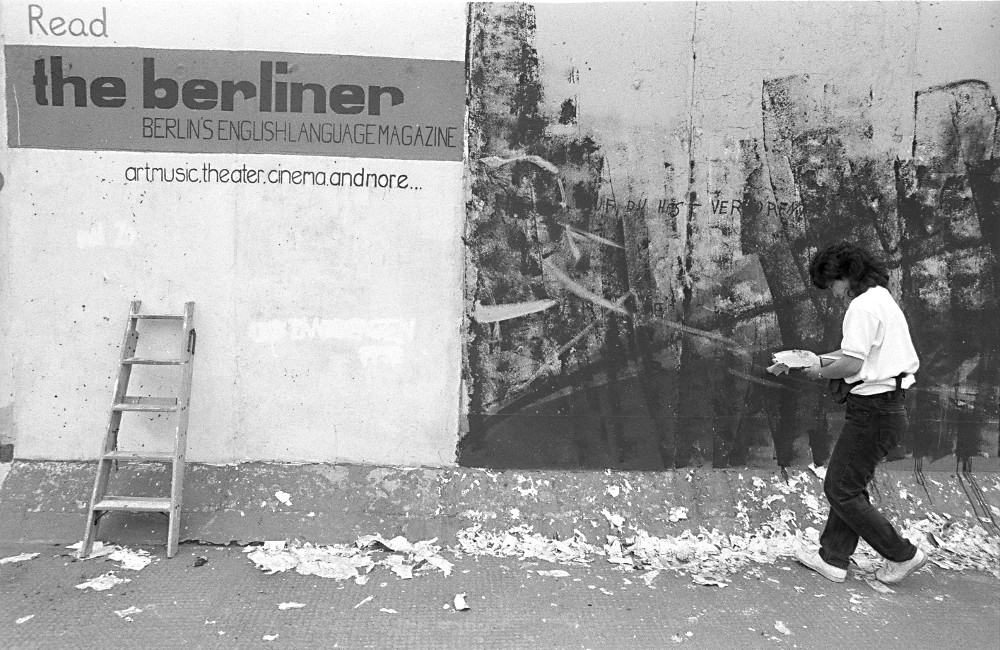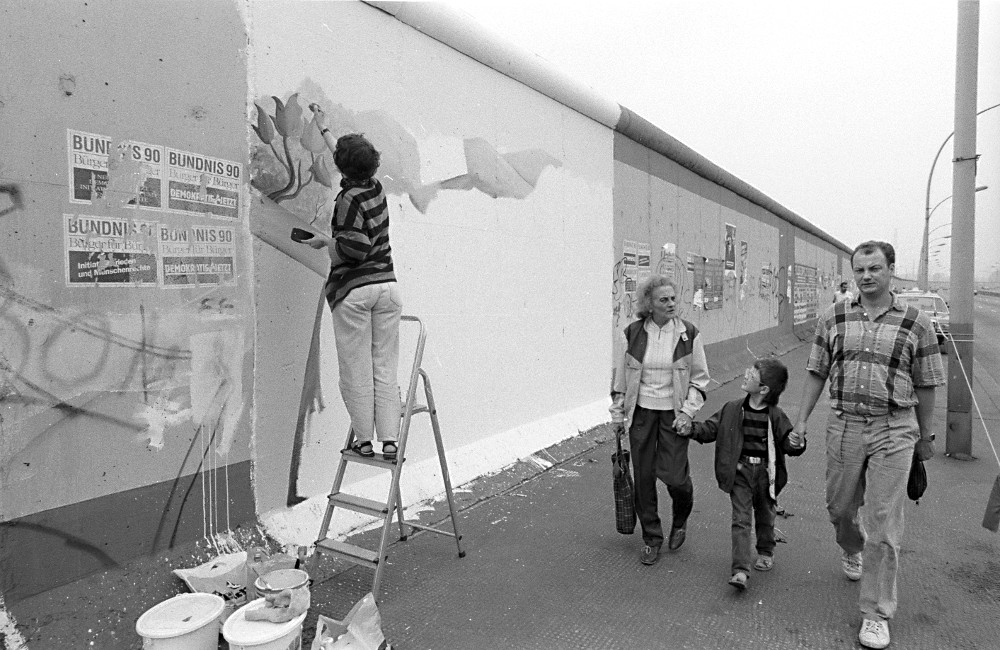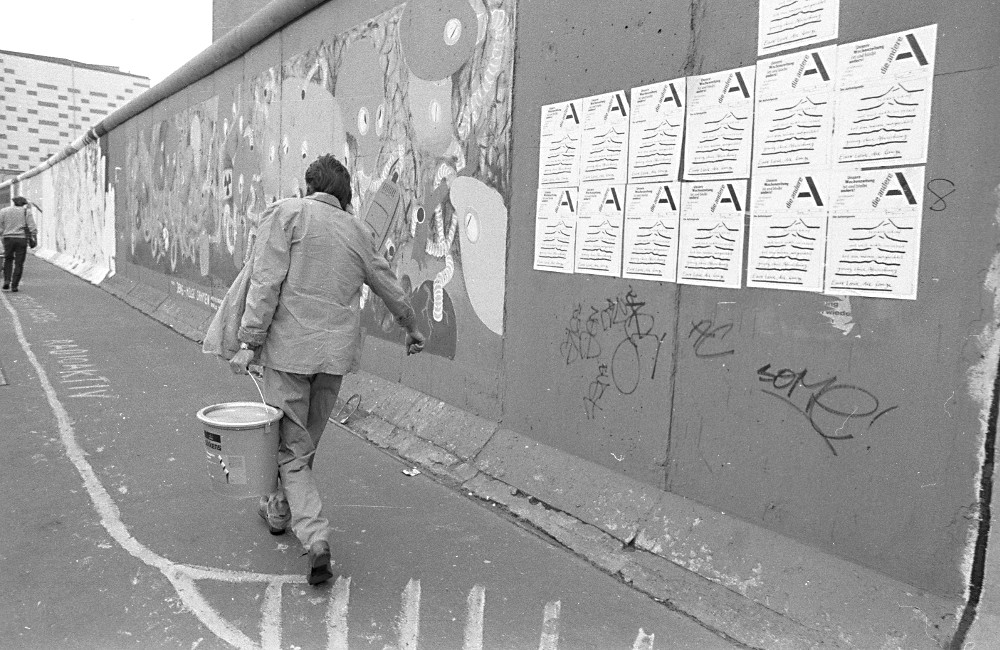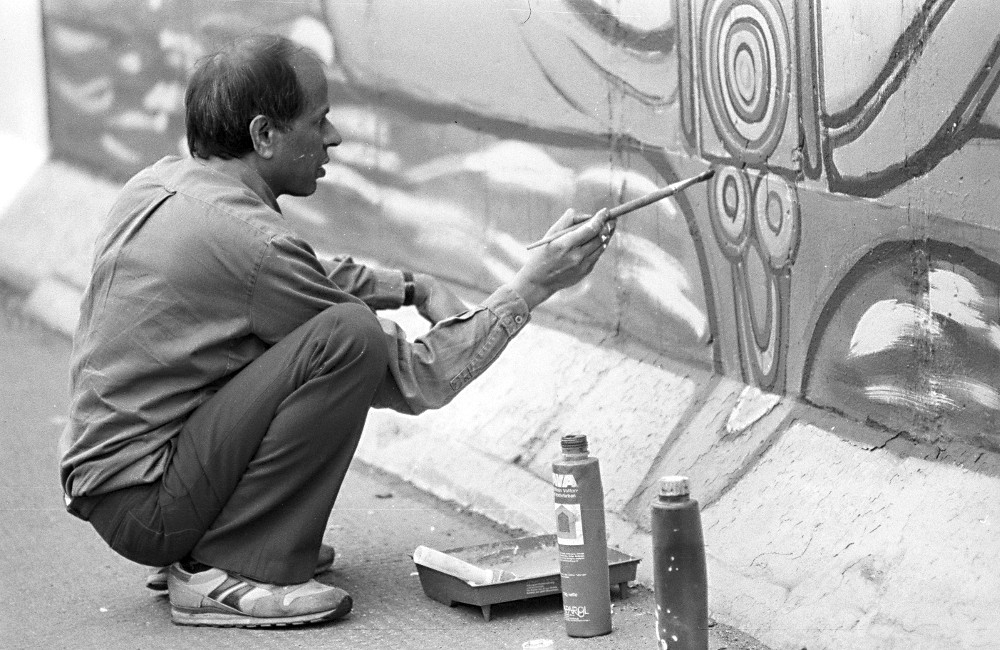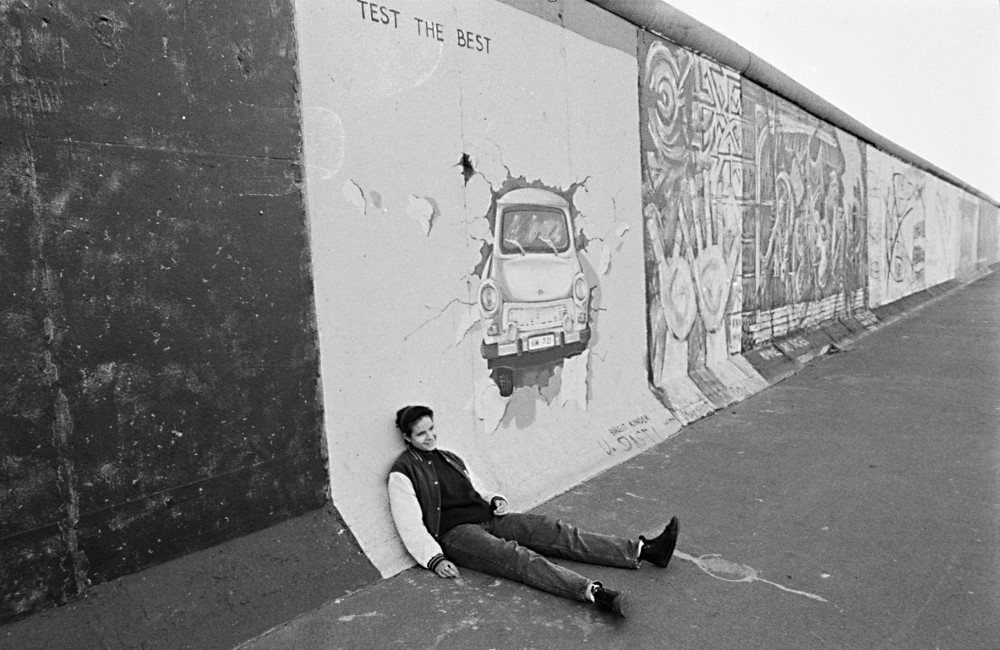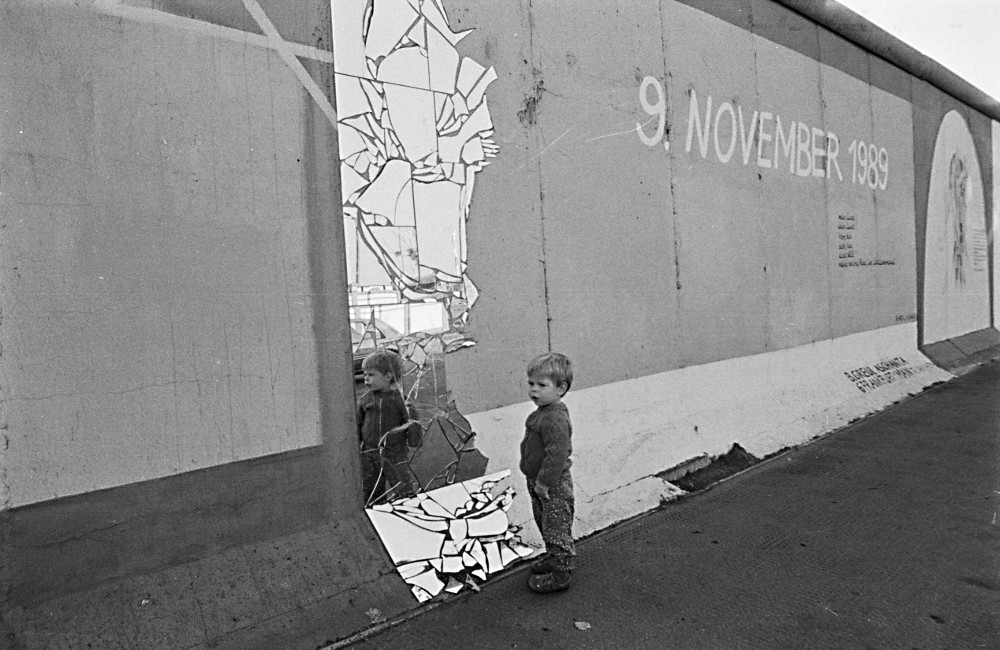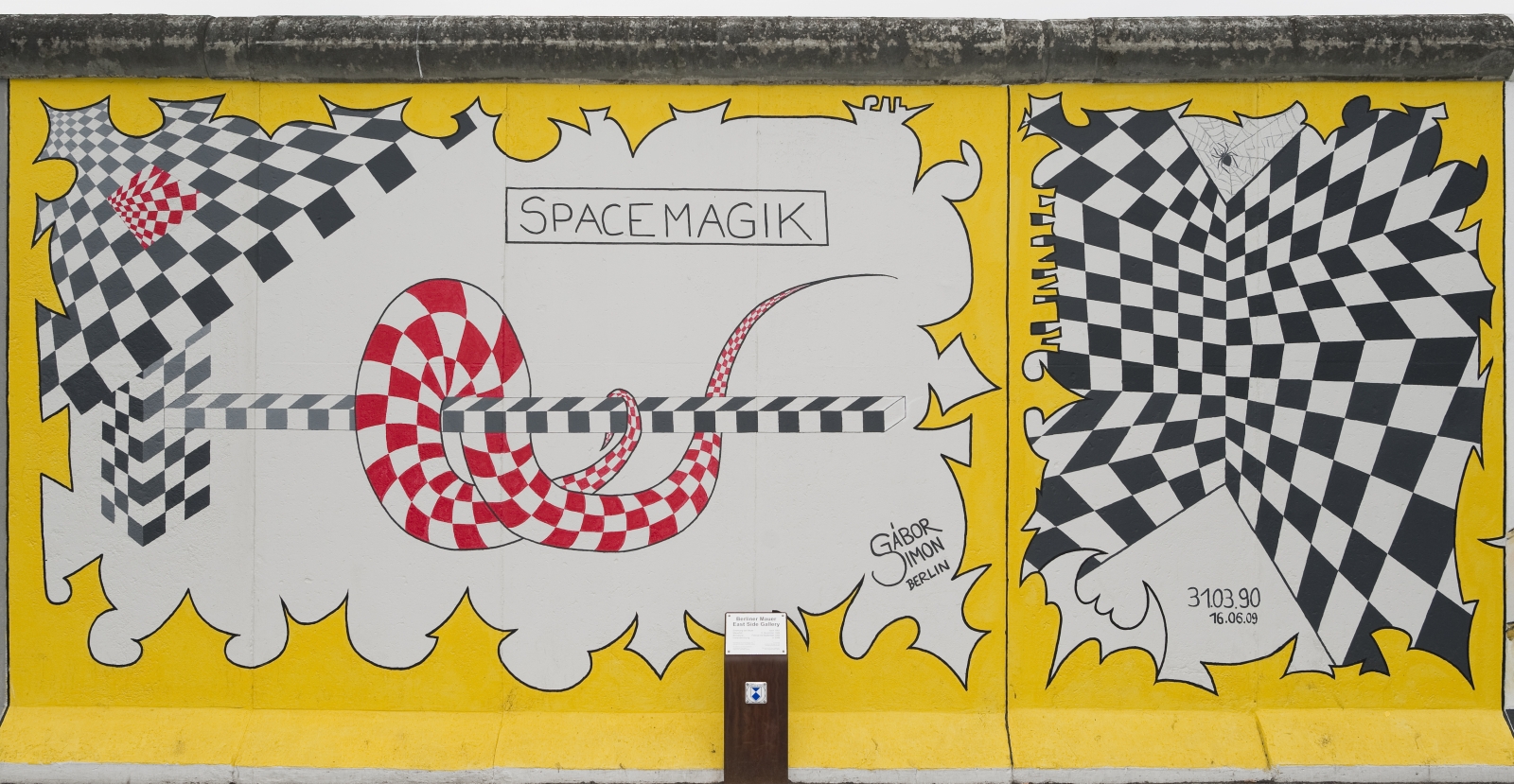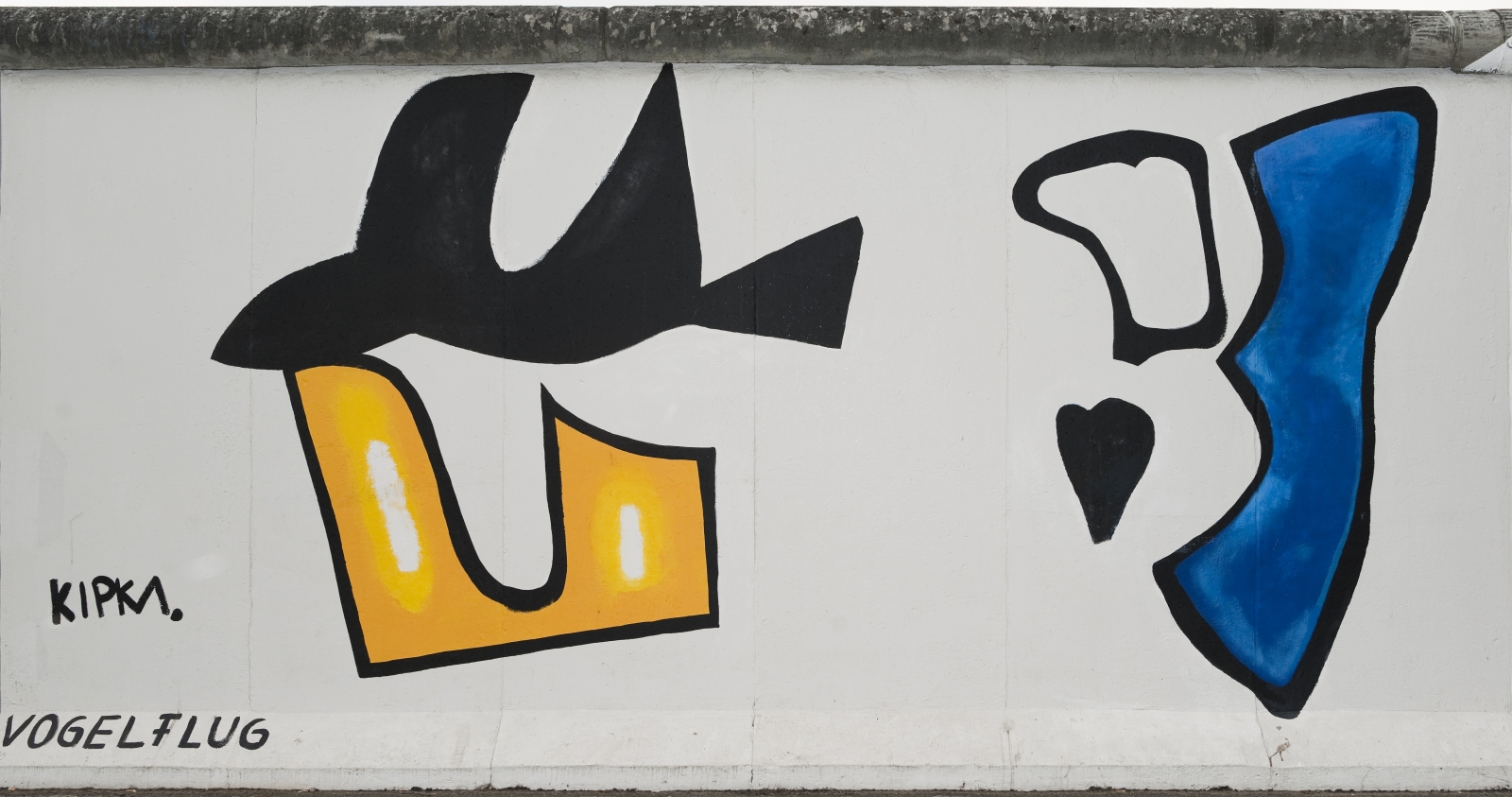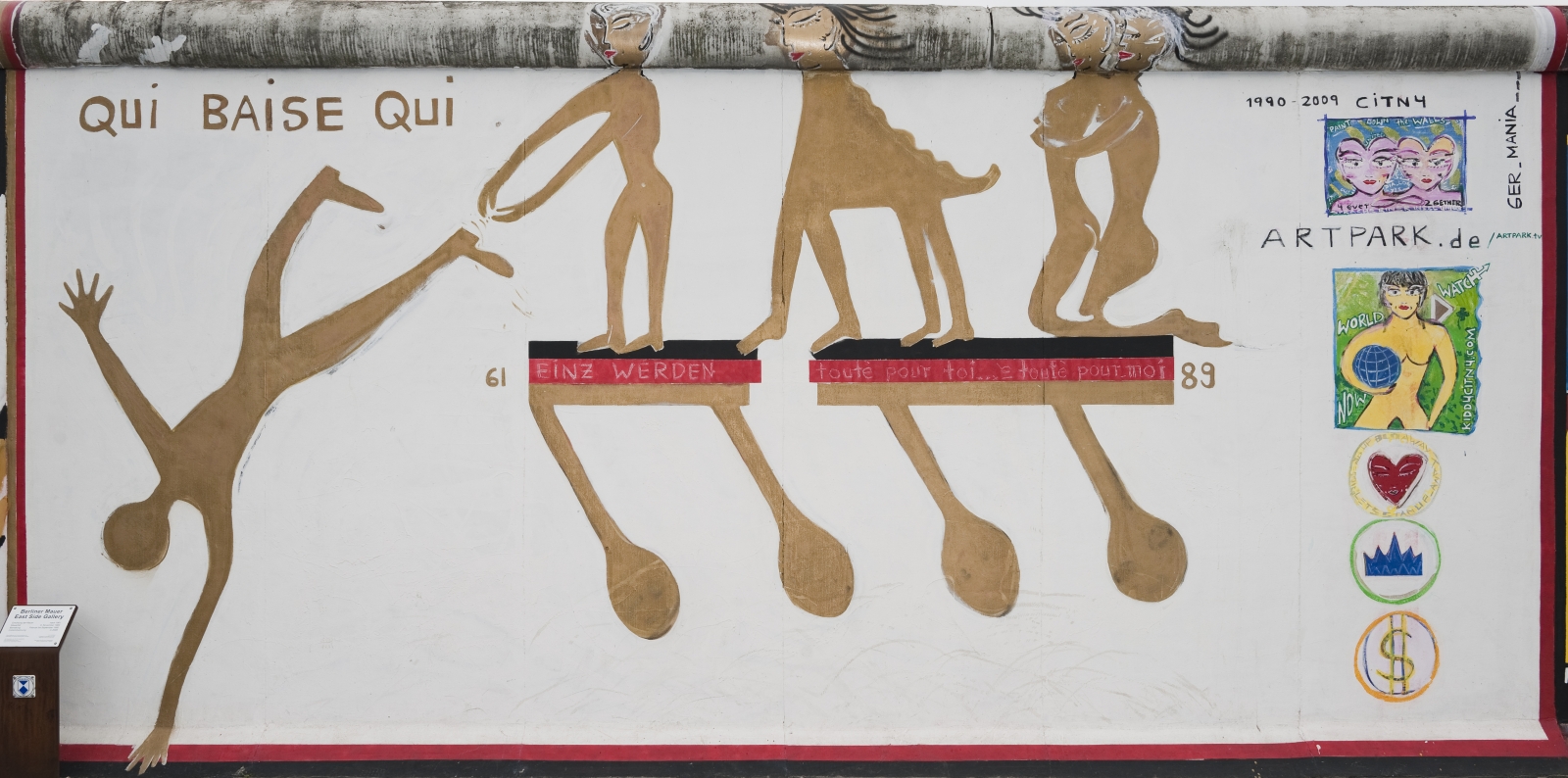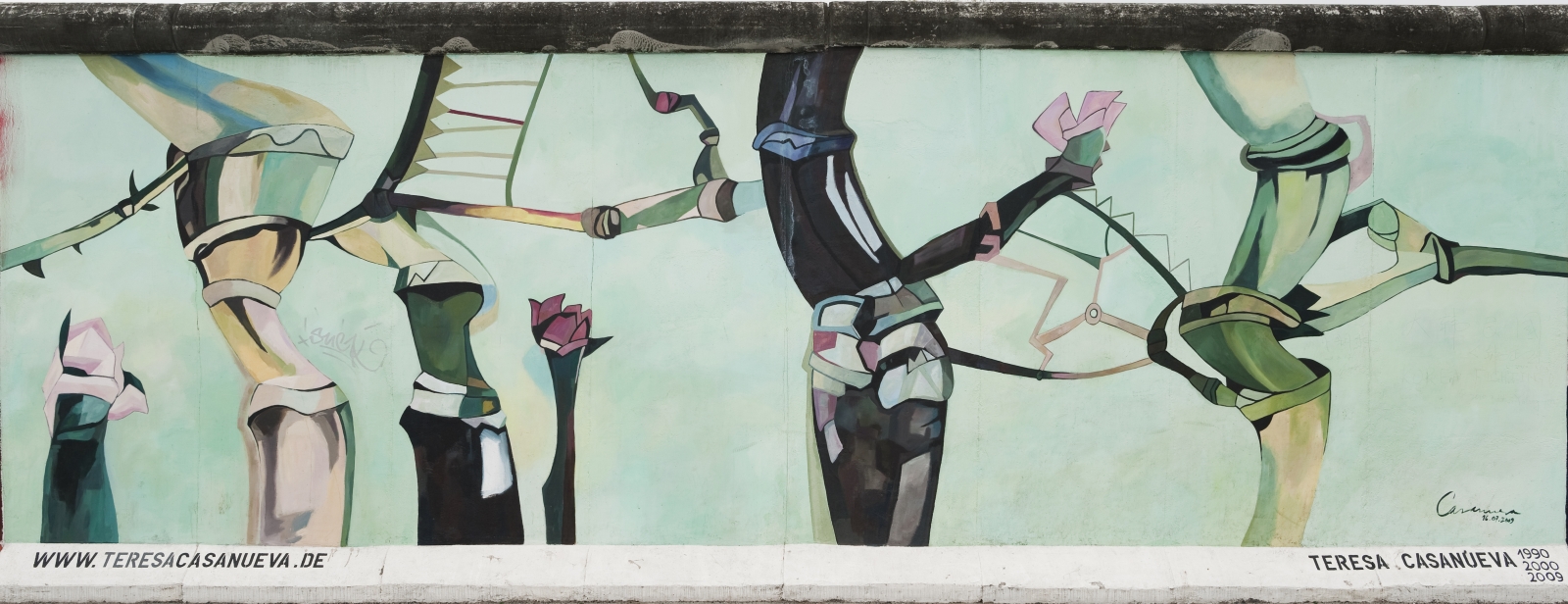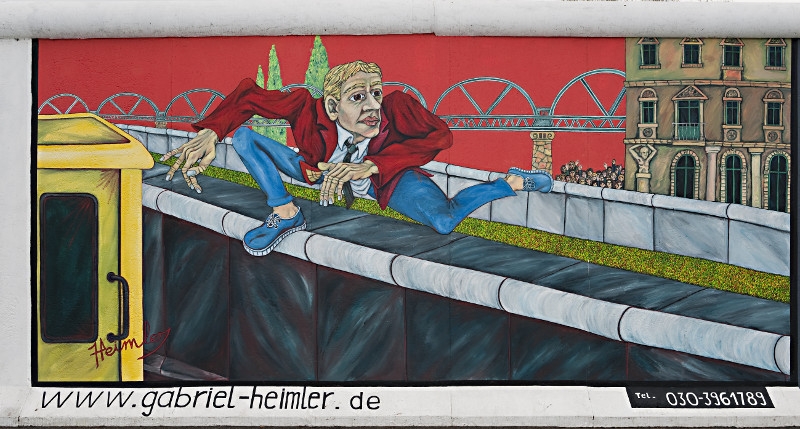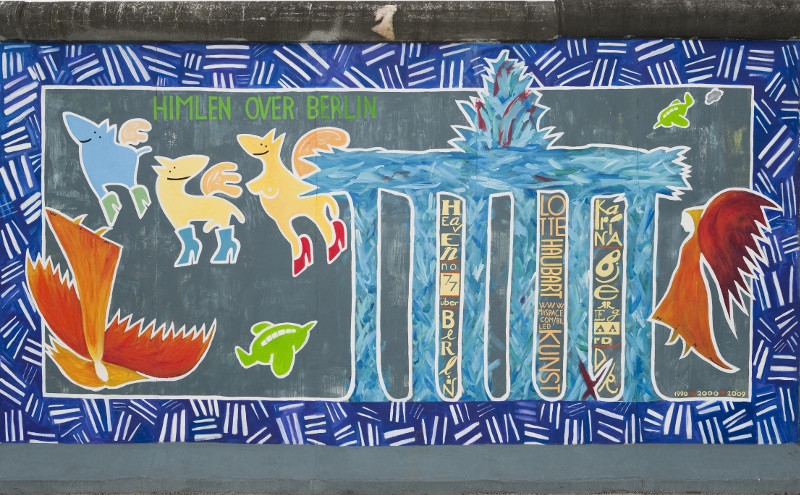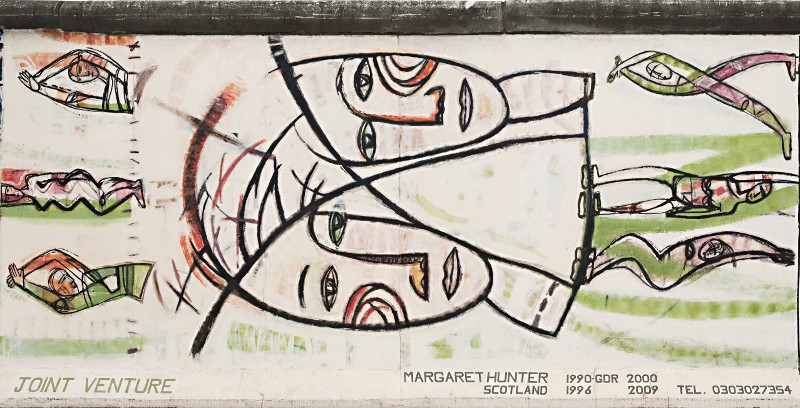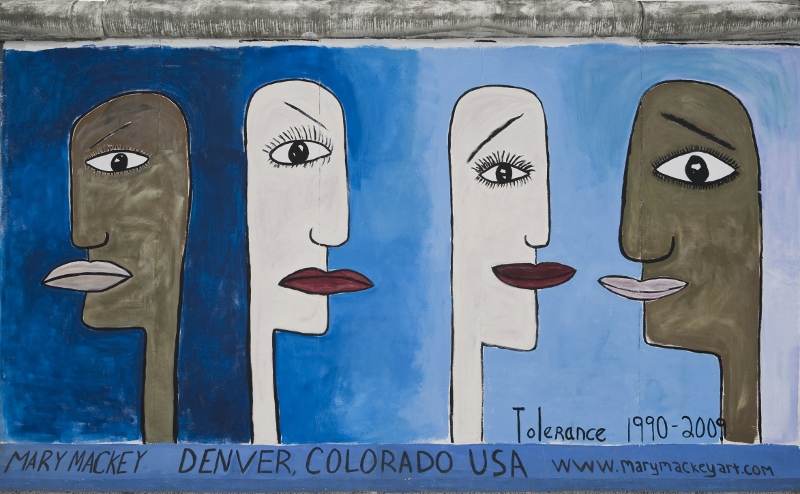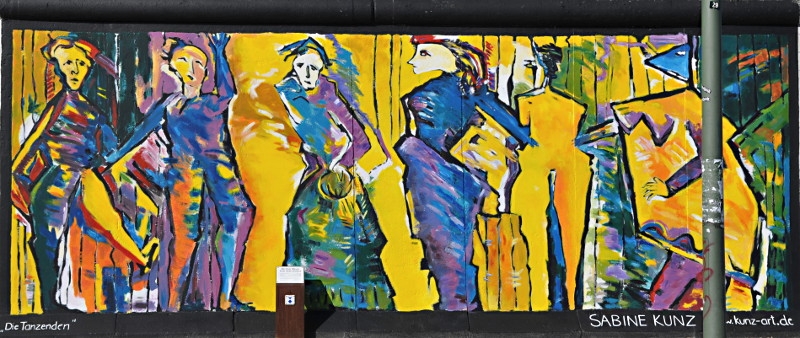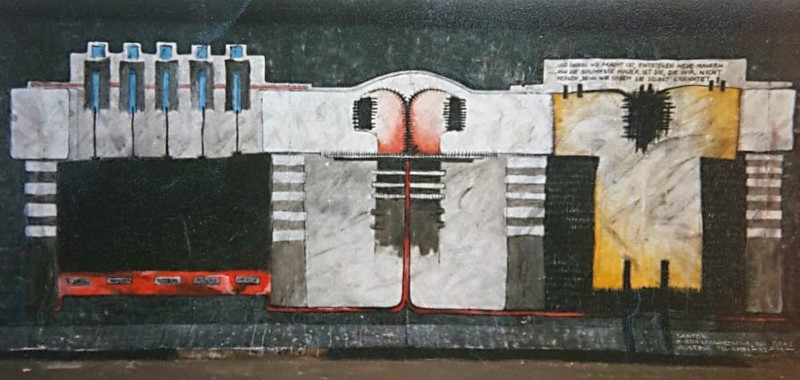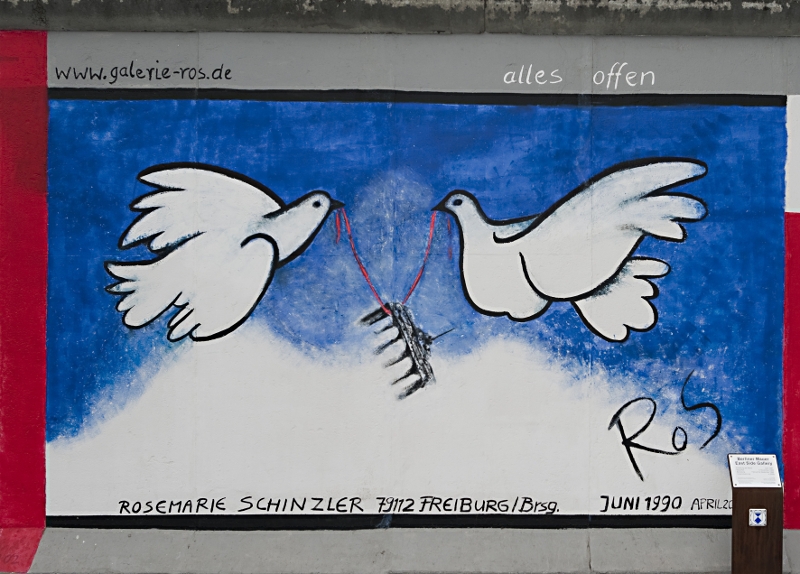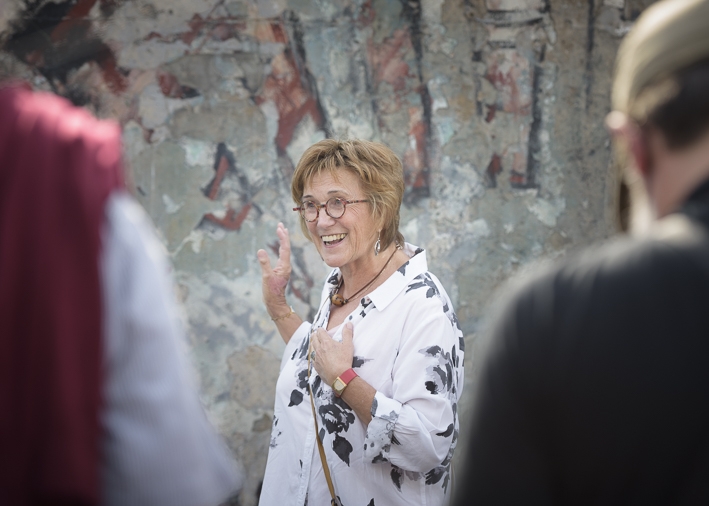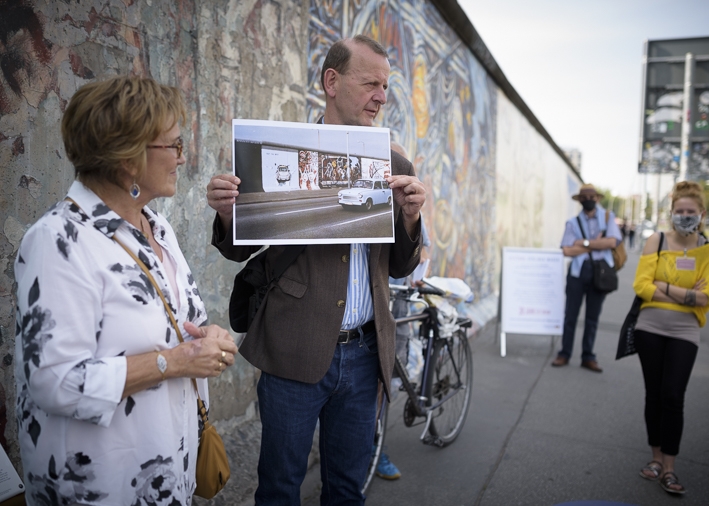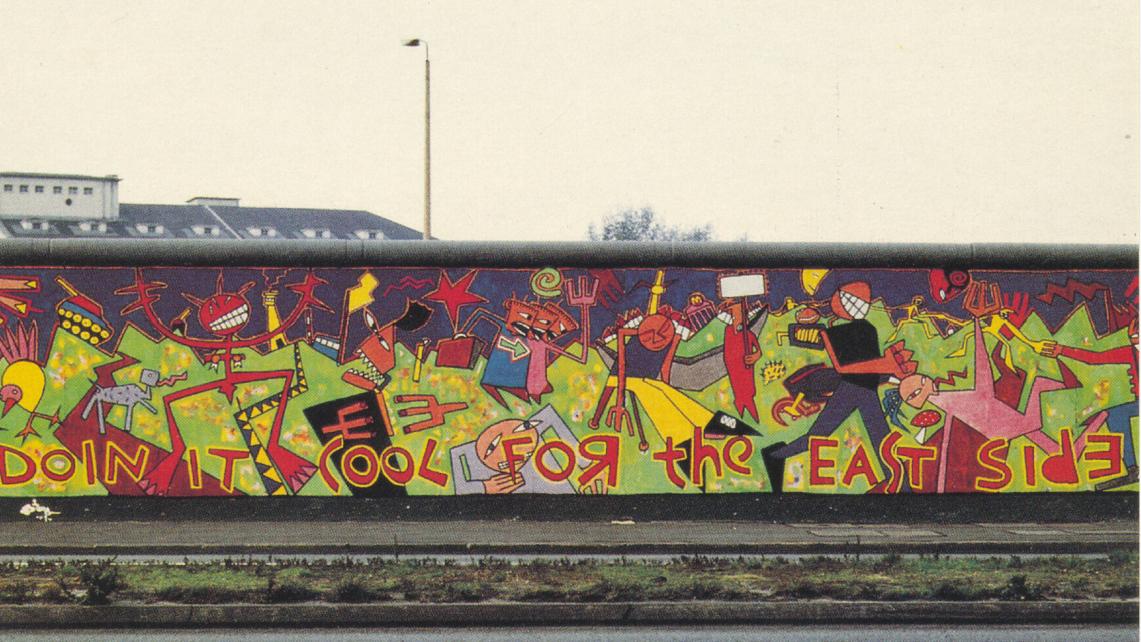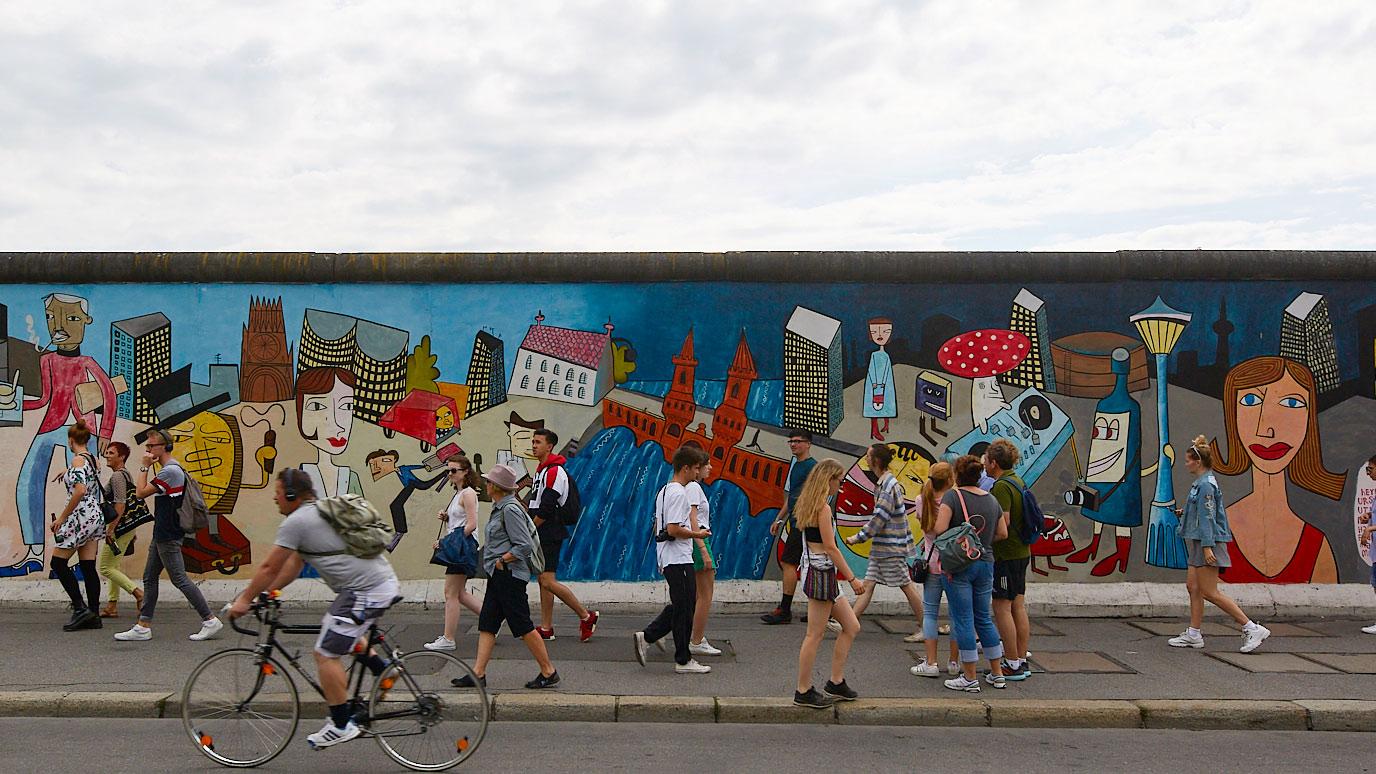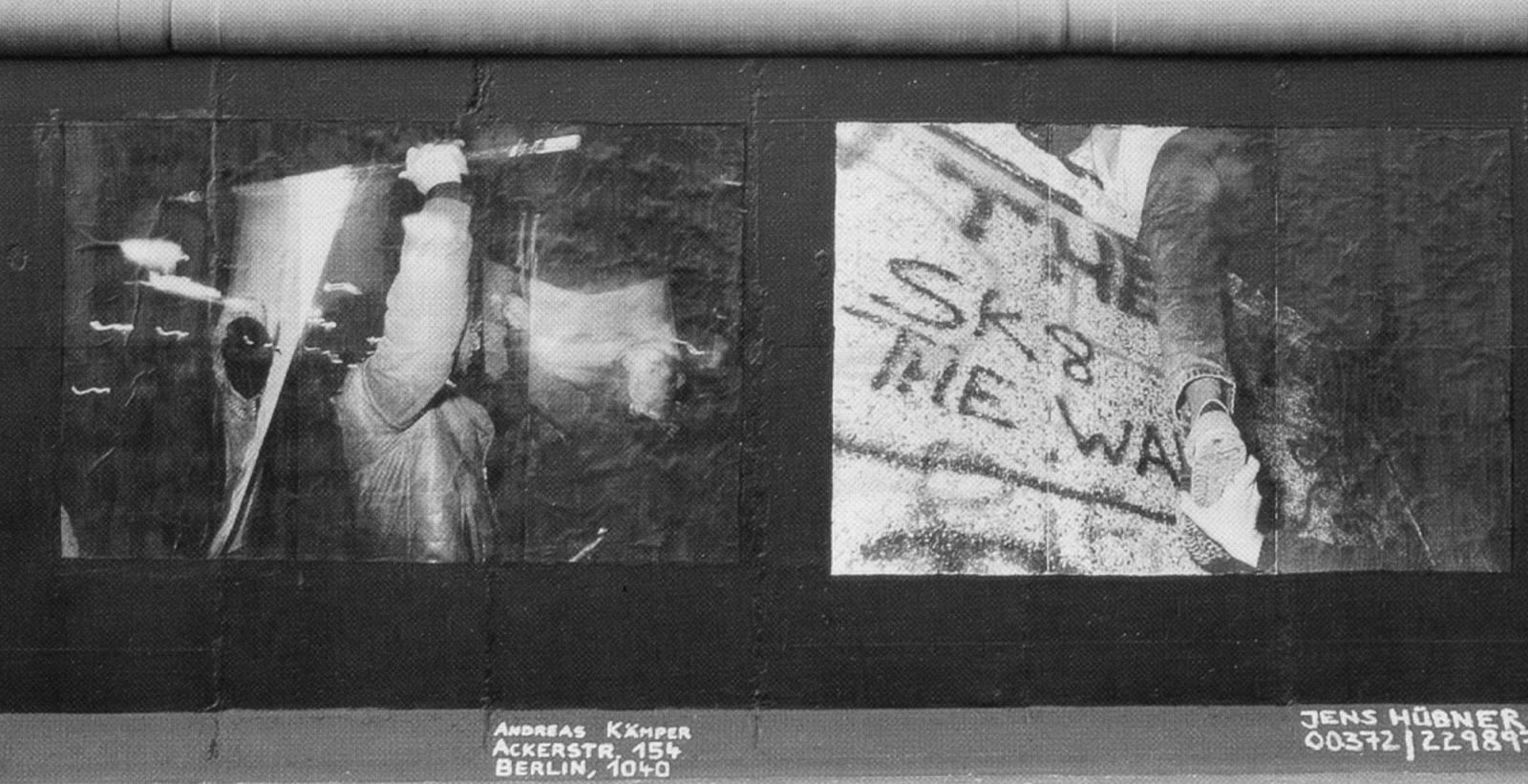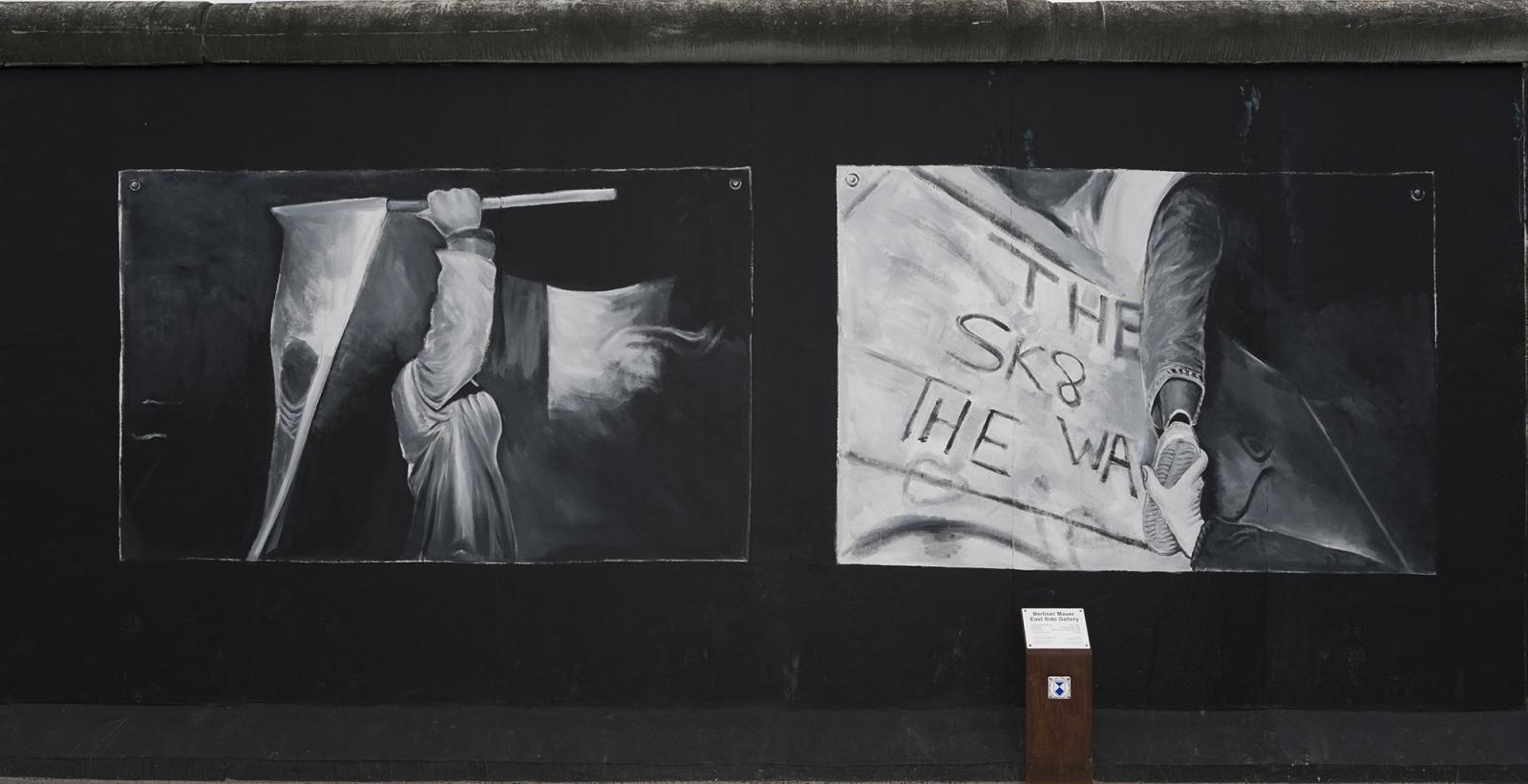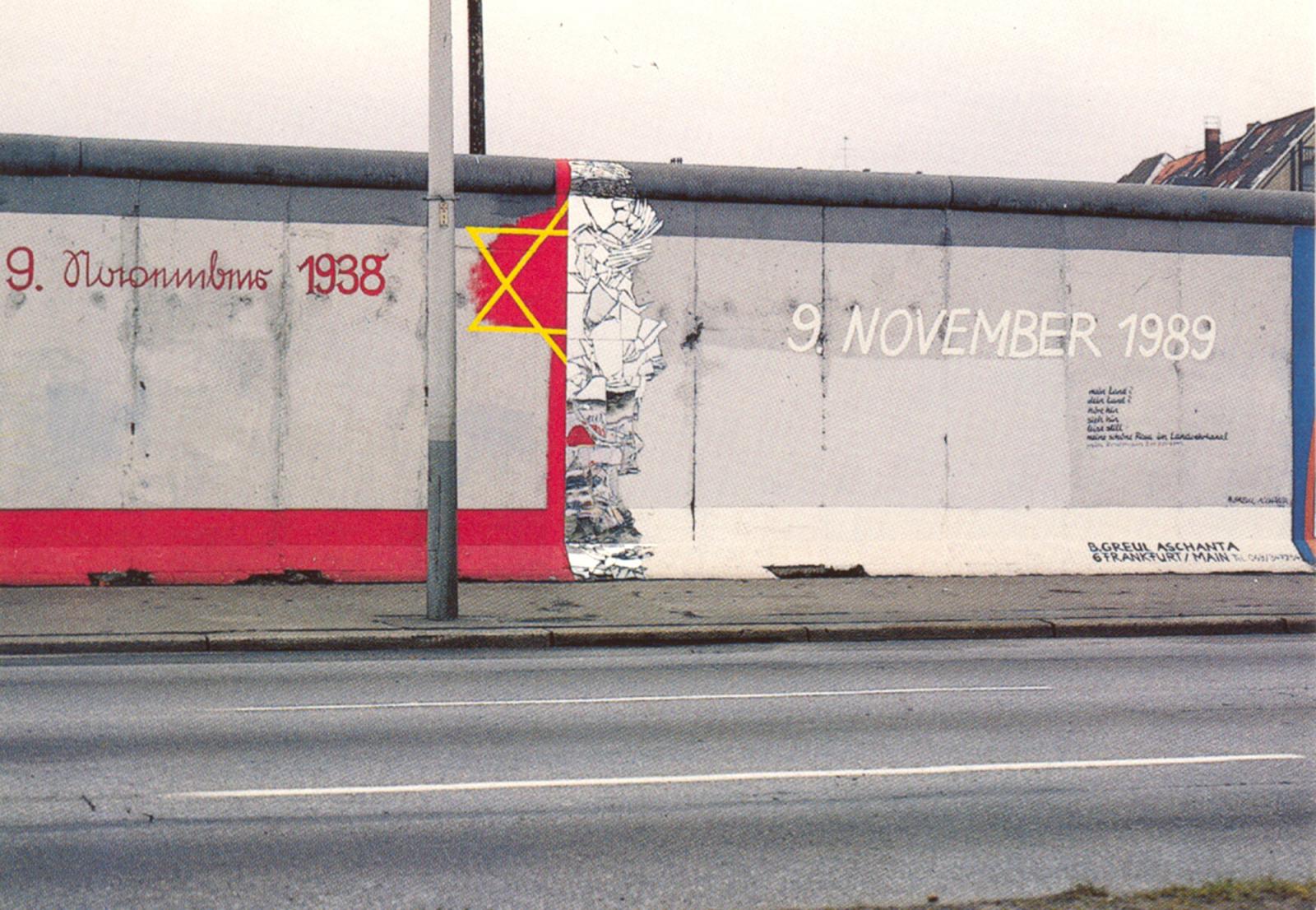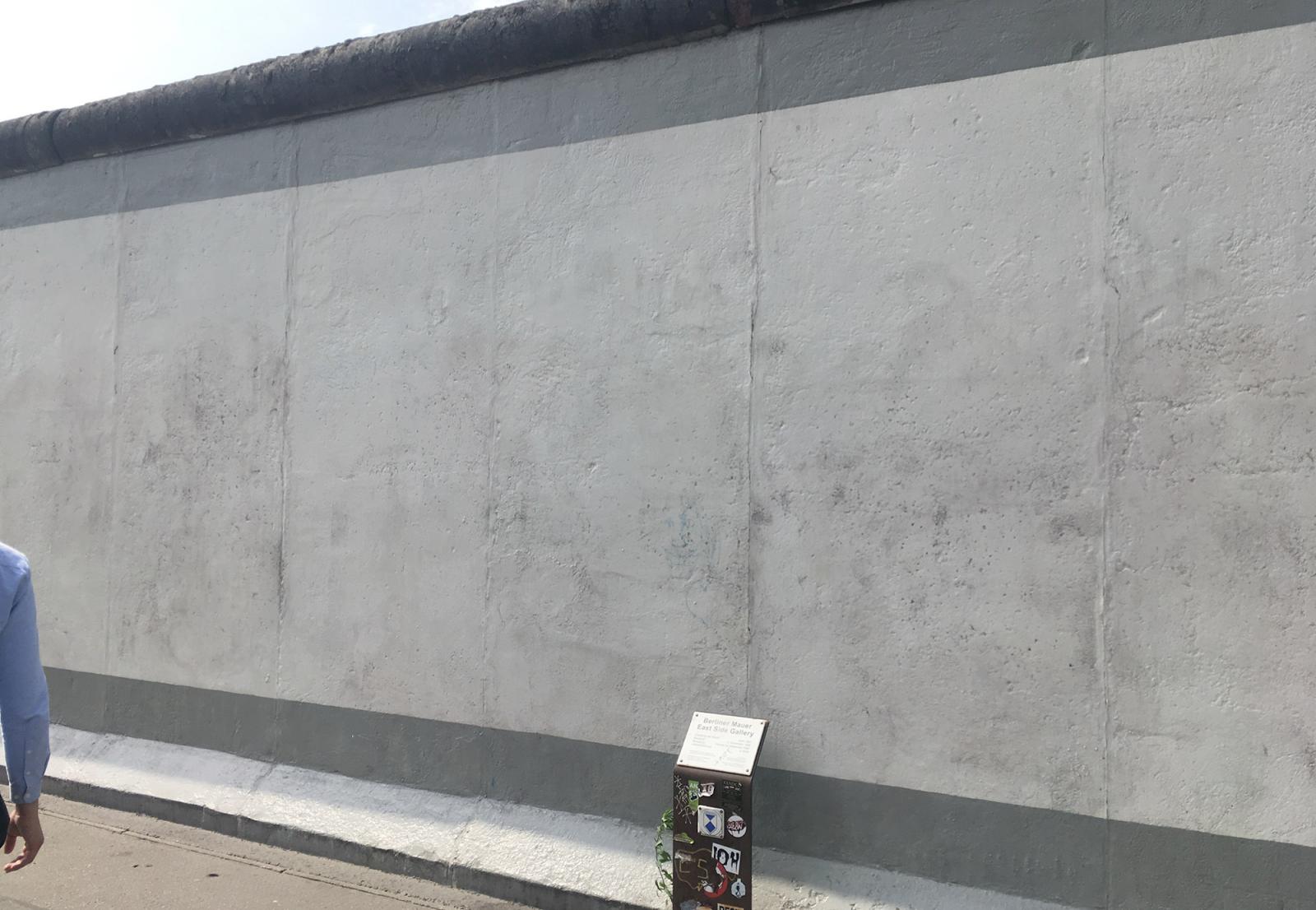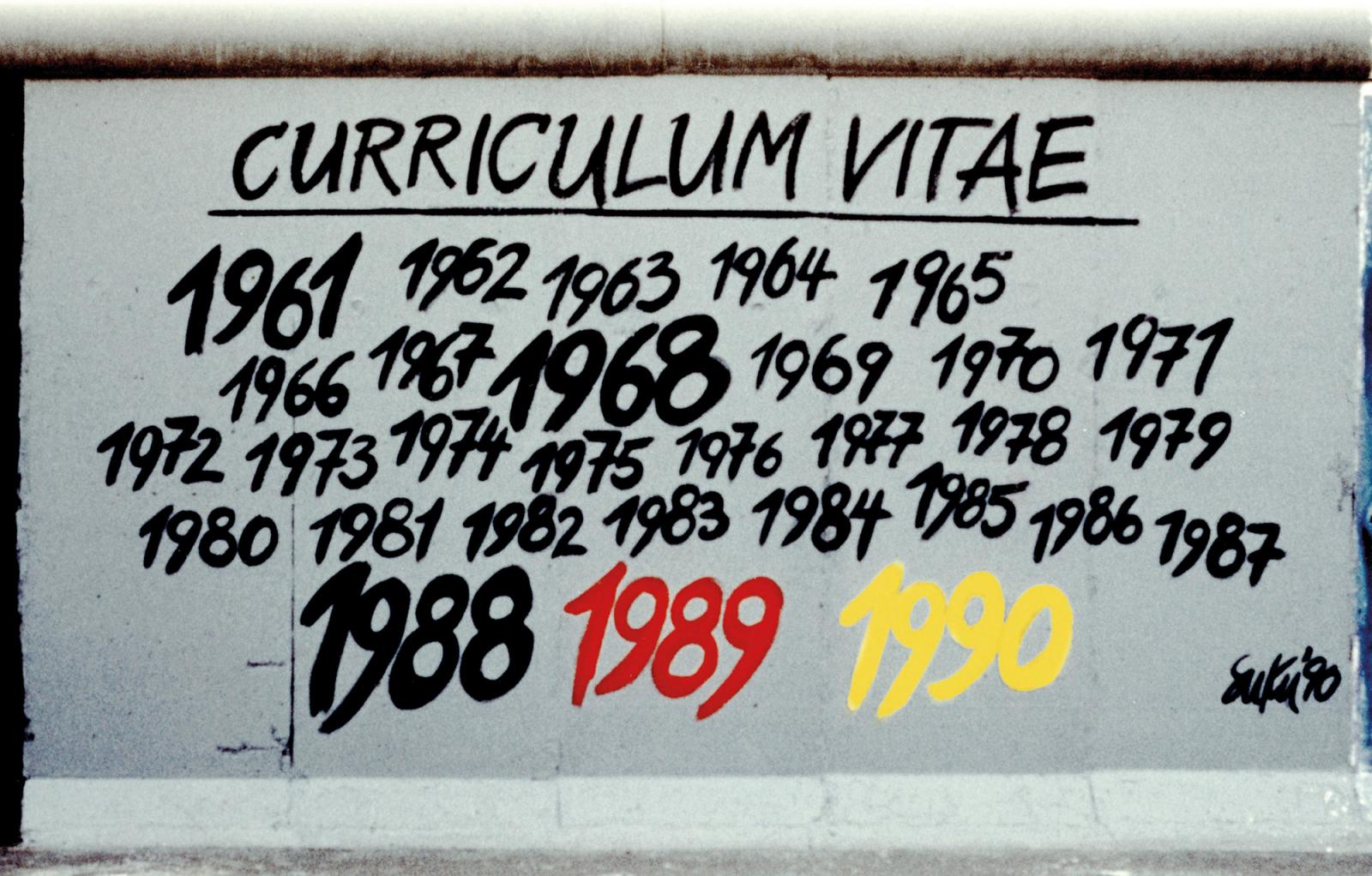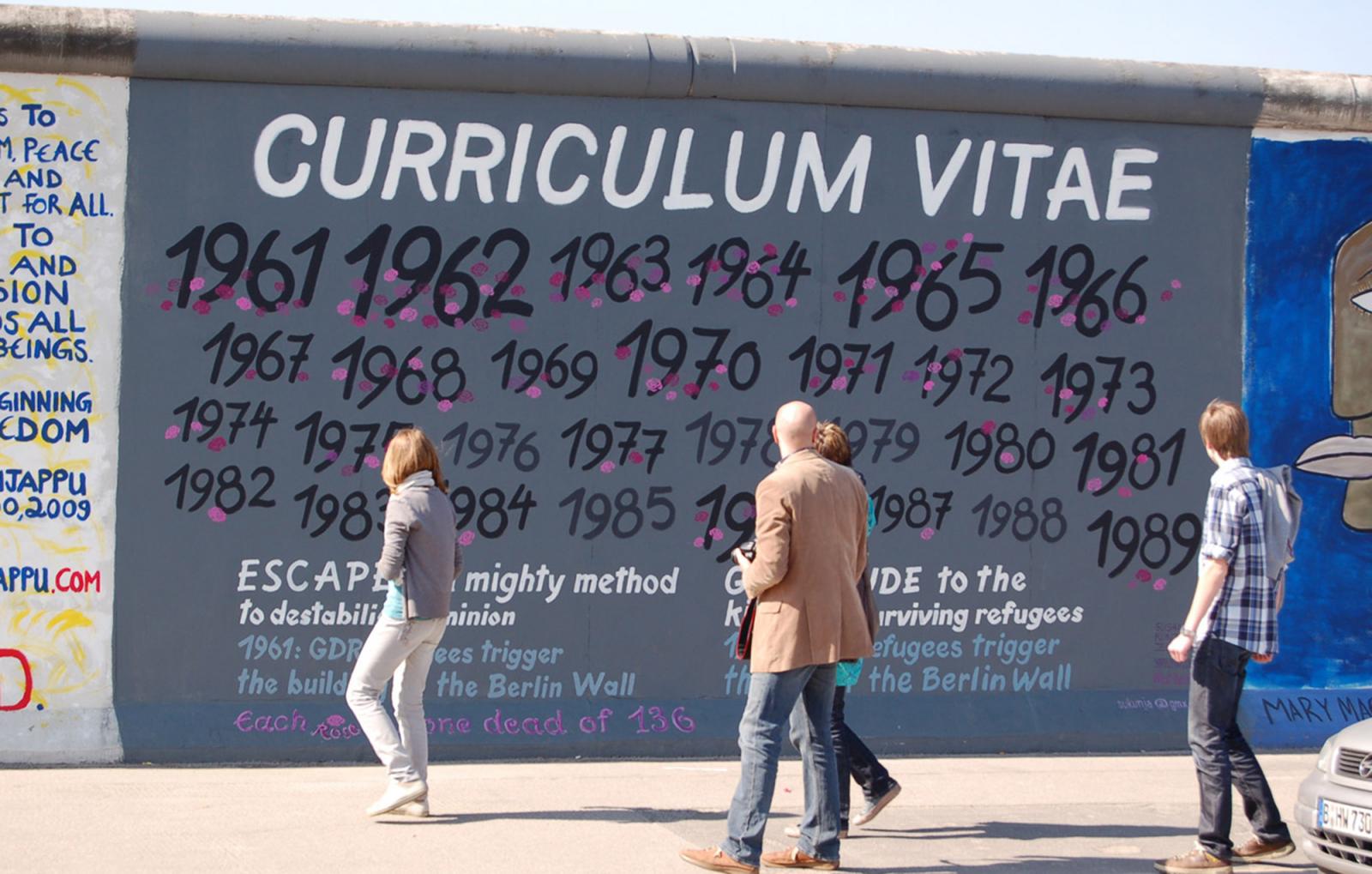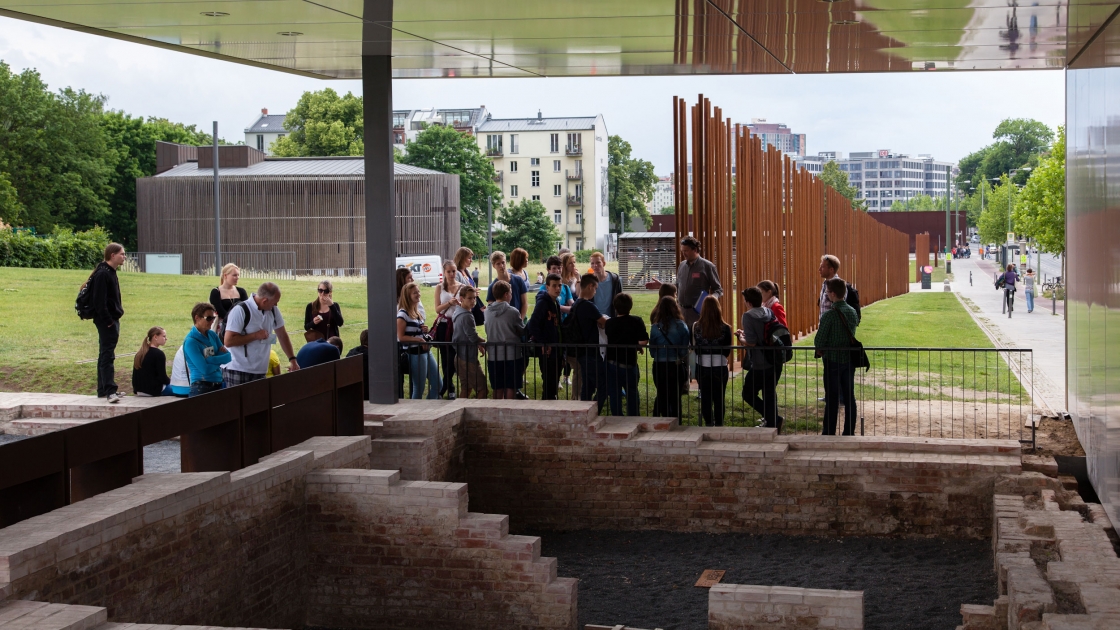The Longest Open-Air Gallery in the World from 1990 to the Present
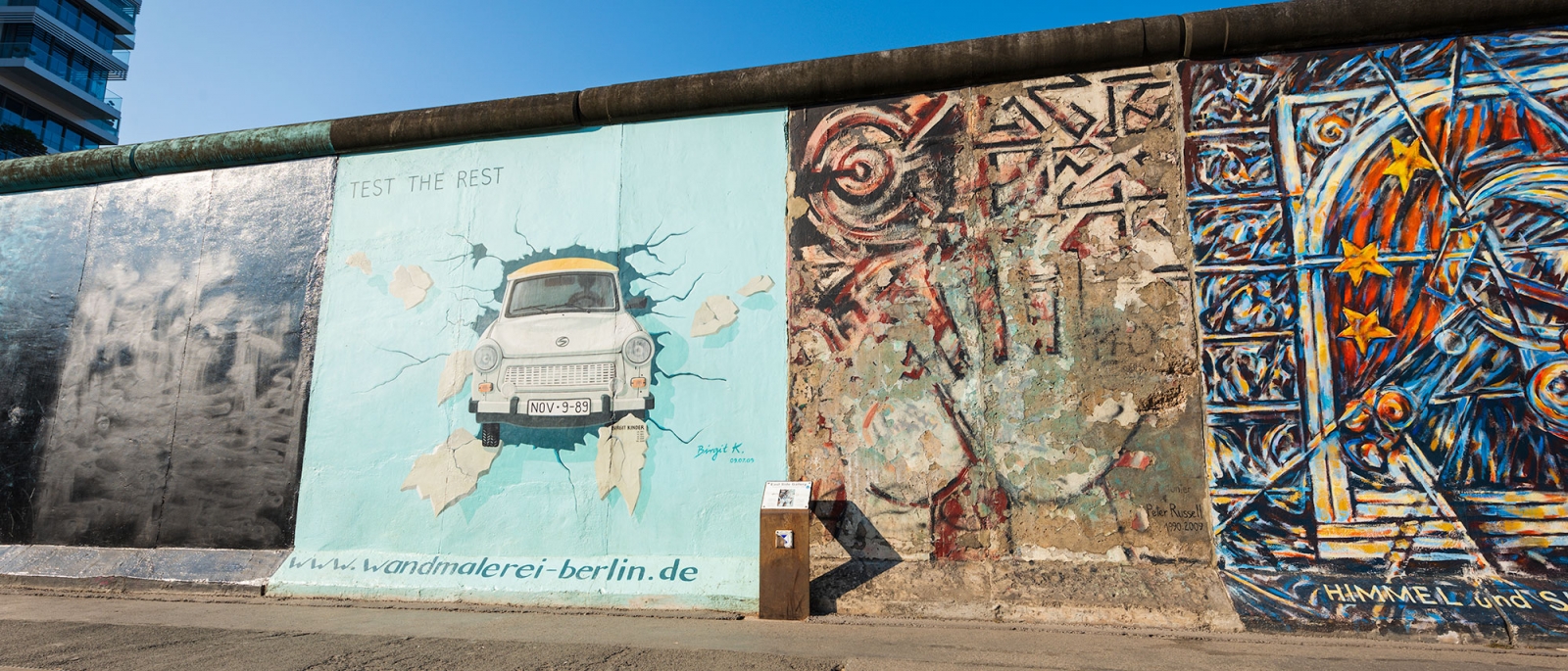
The East Side Gallery extends along more than 1.3 kilometers between Ostbahnof and Oberbaum Bridge, and is one of the city’s most famous tourist attractions. More than 118 artists from 21 countries worked on the world’s longest open-air gallery. Their paintings help keep the historical site alive and make its history accessible to visitors from all over the world. The East Side Gallery stands both as a symbol of joy over the end of Germany’s division and as a historical reminder of the inhumanity of the GDR border regime. Learn more about how the East Side Gallery was created, which artists participated in the project, and how the gallery has changed since its opening in 1990.
Index
Artists began painting the east side of the structure just days after the border opened. But GDR border guards promptly covered over the pictures that had been painted on segments of the Wall at Potsdamer Platz. A short time later, the artist David Monty from Schöneberg, accompanied by Heike Stephan, an artist from Prenzlauer Berg, presented his idea of making “the Wall into the largest gallery in the world.” In discussions with the Ministry of National Defense, it was agreed that only the section of Wall on Mühlenstrasse would be painted. Officially commissioned by the GDR Council of Ministers, the project “East Side Gallery” was founded and artists from all over the world were invited to participate. After Heike Stephan, joined later by David Monty, decided to leave the project, Monty’s assistant at the time, Christine MacLean, took over the project coordination. From March 1990, she supervised the participants, acquired sponsorships and developed publicity strategies. She worked with the event and advertising agency wuva.
The East Side Gallery opened on September 28, 1990. The artists created murals with individual messages and statements, demonstrating that, in the end, the desire for freedom and creativity is stronger than sanctions and force. The more than 100 paintings showed the happiness felt over the fall of the Wall and the end of the Cold War. They expressed their hopes for a life in peace, freedom and democracy. However, many works of art also conveyed concerns about an uncertain future.
With their artwork, the artists were able to hinder the demolition, further decay and destruction of the Wall. The city of Berlin added the East Side Gallery to its register of protected monuments in November 1991. The East Side Gallery is the most visible outcome of the opening of the Wall, but now, with almost the entire Berlin Wall gone, it is also one of the few remaining relics of the border fortifications at its original location, serving as a reminder that the city was divided for 28 years.
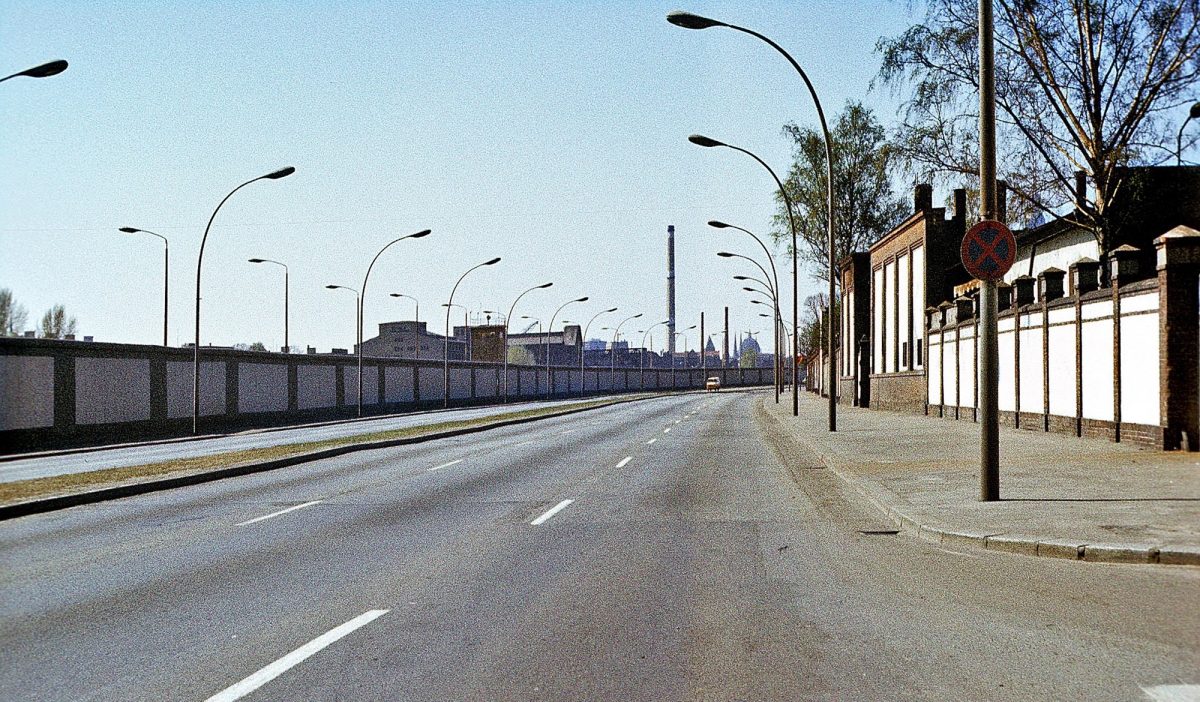
The Mühlenstraße 1987. Photo by Gerd Danigel Frei
Comments on Creating the East Side Gallery
The artists Jim Avignon, Andreas Kämper and Kiddy Citny, along with Christine MacLean, co-organizer of the East Side Gallery, share memories of painting the Wall in 1990. In conversation with Lutz Henke (Visit Berlin), 30 years after the East Side Gallery was dedicated, they spoke about the conditions under which the art project took place and their different personal relationships with the Berlin Wall. They also discuss how the site should be dealt with in the future.
The panel discussion took place as part of the events marking the 30th anniversary of the East Side Gallery.
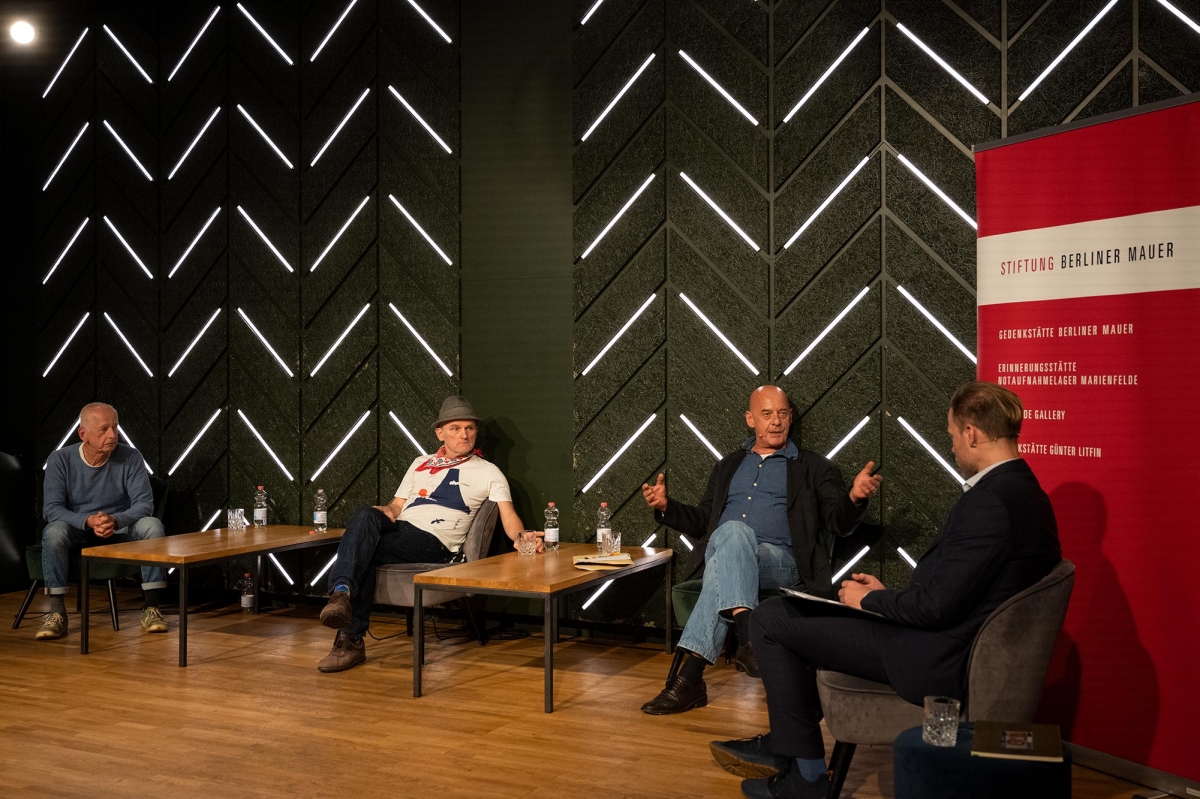
Panel discussion with contemporary witnesses on the 30th anniversary of the opening of the East Side Gallery © Berlin Wall Foundation, Photo: Ladan Razaeian
In the podcast series “Feelings for the Future 1990: Stories about the Wall Art at the East Side Gallery,” East Side Gallery artists tell the stories behind their artwork (in German). They recall the moment when they stood in front of the Wall – the same wall that just shortly before had been so threatening and impenetrable – and made their first brushstrokes.
The East Side Gallery as a Controversial Monument
The last large-scale renovation of the East Side Gallery took place in 2009. The renovation was necessary due to weather-related decay, massive amounts of graffiti and both minor and major acts of vandalism. It was carried out by the “Gesellschaft der behutsamen Stadterneuerung mbH” (S.T.E.R.N.) with a budget of more than 2 million euros. The renovation included stonework repairs, which required sandblasting large portions of the murals. When the work was completed, the artists were invited to repaint their murals on the Berlin Wall. Most of the artists restored their original paintings, but a small group was critical of the renovation work and refused to redo their paintings. Their wall segments have remained unpainted ever since. The murals on the East Side Gallery today are the replicas from 2009 with one original work from 1990, titled “Hands” by Margaret Hunter and Peter Russell.
Hands
The Only Preserved Original at the East Side Gallery
The painting “Hands” by Margaret Hunter and Peter Russell impressively conveys the history of the East Side Gallery: As the only original from 1990, it shows how the paintings originally looked. “Hands” was the only work that was not repainted during the major renovations that took place in 2000 and 2009. Instead, various conservation measures have been applied to the work since 1990.
As part of the 30 year anniversary of the East Side Gallery, the Berlin Wall Foundation had the painting conserved for the future. On September 13, 2020, Margaret Hunter and Foundation Director Axel Klausmeier spoke about the protection and restoration of the monument. Guided tours were held afterwards, during which participants discussed the different artwork.
Listen to a podcast with the artist to get an impression of the day and learn more about how “Hands!” was first made and how it has changed.
In the years after the fall of the Wall, urban planning concepts were implemented in the Spree area around the Oberbaum Bridge. The construction projects directly on the waterfront were often in conflict with efforts to preserve the East Side Gallery, which is a protected structure. Openings were made in the wall to facilitate construction, sparking large protests and demonstrations, especially in 2013. Most recently, in March 2018, parts of the painted wall were moved to another nearby area.
In November 2018, the State of Berlin transferred responsibility for the “Park on the Spree” and “East Side Park” properties, together with the segments of the former Berlin Wall (East Side Gallery), to the Berlin Wall Foundation. The foundation’s mission is to maintain and preserve the memorial and to educate and inform the public at the site about the history of the Berlin Wall and the East Side Gallery.
The East Side Gallery artwork looked a lot different in 1990 than it does today. Due to graffiti and weather-damage, by the 1990s it had already become necessary for artists to partially or completely repaint the damaged areas of their pictures. Extensive restoration work was carried out in 2008/2009 to ensure the long-term preservation of the artwork. In order to repair the underlying masonry, it was necessary to destroy the paintings. Afterwards, many of the artists repainted their pictures: some created replicas true to the original, others made changes to their original work. A small group refused to repaint their pictures.
Here we show you only a small selection of the changes to the images.
Jim Avignon
„Doin it cool for the East Side“
During the renovation in 2000, the painting was completely removed and reconstructed by another East Side Gallery artist. In 2009, further restoration measures had to be taken on parts of the painting. Jim Avignon was not involved in this process. He criticized the reconstruction of the original, arguing that art in public space should always maintain a relationship with the current conditions. With this in mind, he completely repainted his picture in 2013 with the help of art students from Berlin.
Hans-Peter Dürhager und Ralf Jesse
"Der müde Tod" (Tired Death)
During renovation work in 2008/2009, the artists changed the painting’s color scheme.
Andreas Kämper und Jens Hübner
"Ohne Titel" (untitled)
In 1990, the artists pasted onto the wall a large-format photograph of a demonstration that had taken place in Leipzig in autumn 1989. During renovation work in 2008/2009, their picture was reconstructed by another East Side Gallery artist. During this process, the photo was painted, not pasted, to the wall as it had been in the original.
Barbara Greul Aschanta
"Deutschland im November“ (Germany in November)
The artist did not participate in the 2008/2009 renovation work. She founded the “East Side Gallery Founders’ Initiative” with other artists and criticized the renovations and what – in her view – was a lack of appreciation (including financial support) and a failure to involve the artists. The site where her painting had been is now painted a whitish-gray color, as a reminder of how the Wall looked when the city was divided.
Susanne Kunjappu-Jellinek
„Curriculum Vitae“
During the 2008/2009 renovation work, the artist added a new color scheme to the picture and changed other details. The 1990 painting had conveyed the joy felt over the fall of the Wall; 20 years later the artist placed emphasis on remembering the victims of the Berlin Wall. For each person who had died, she painted a rose petal on the corresponding year of their death.
